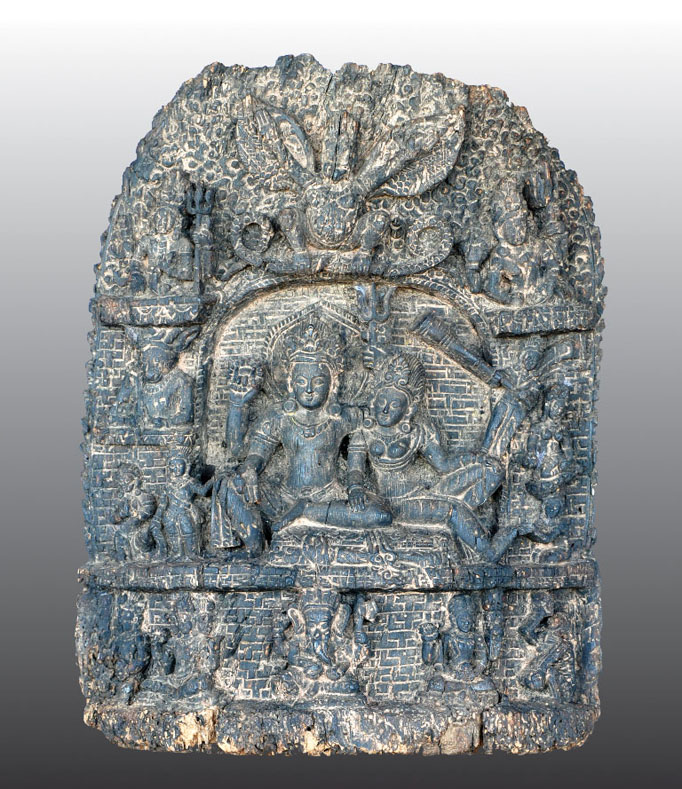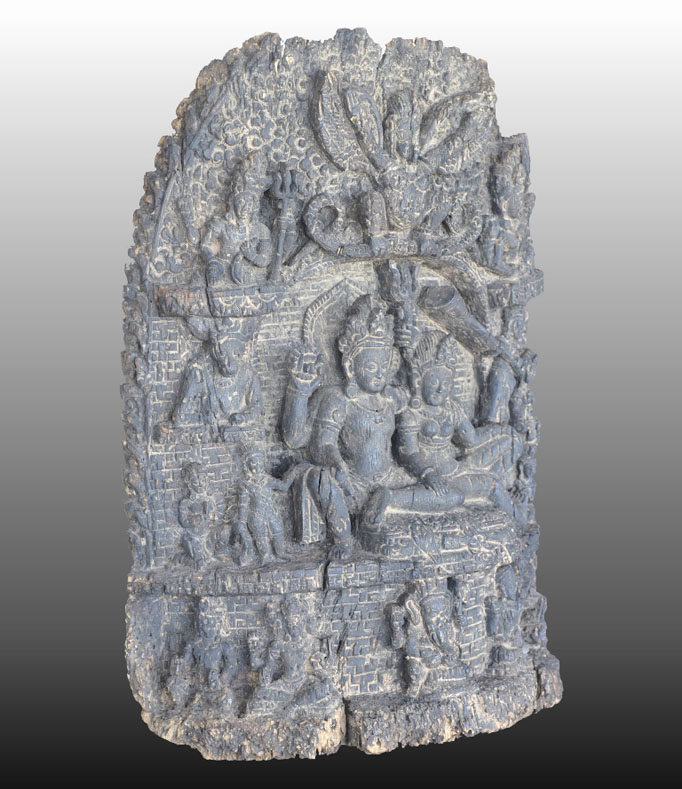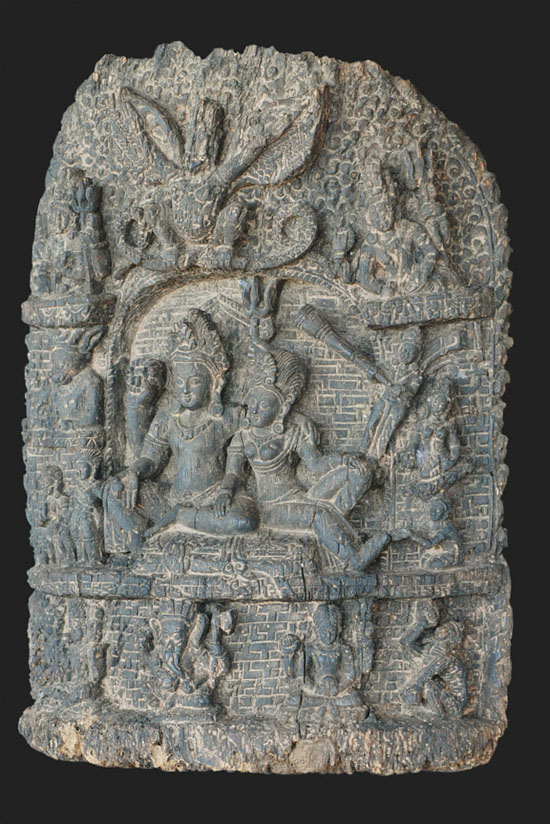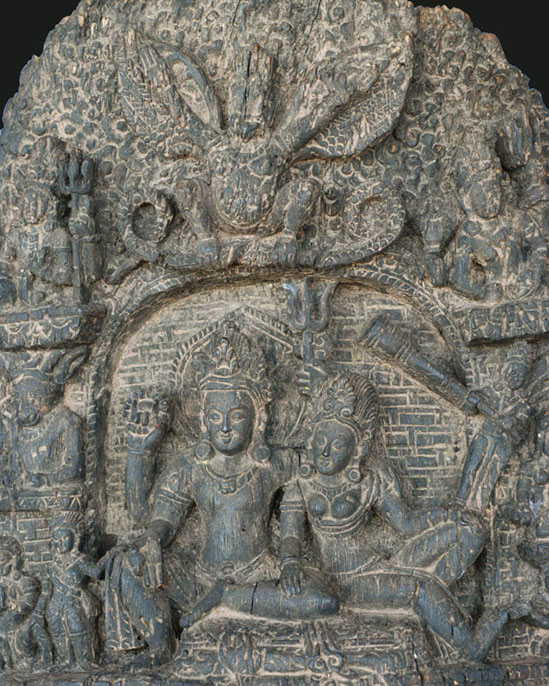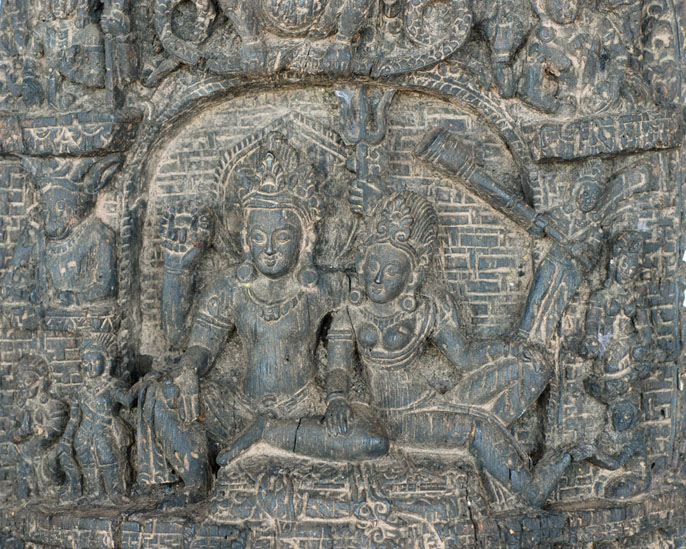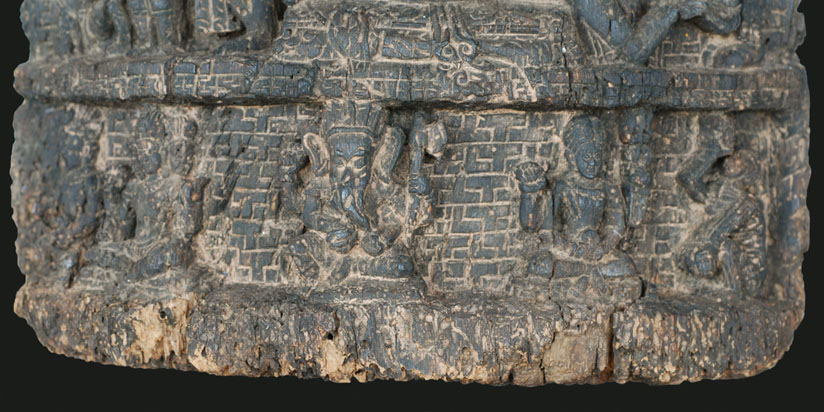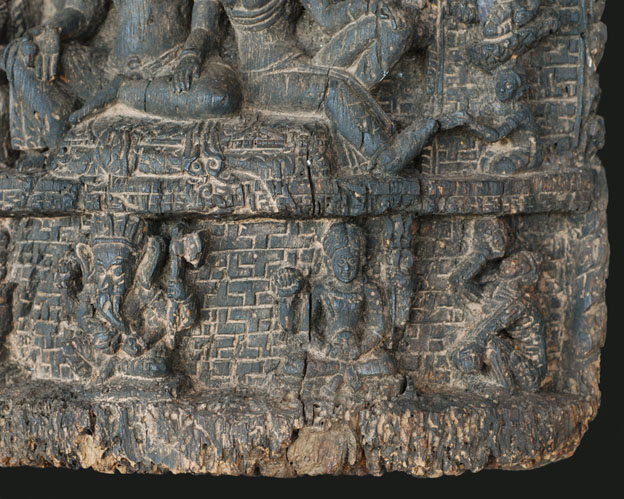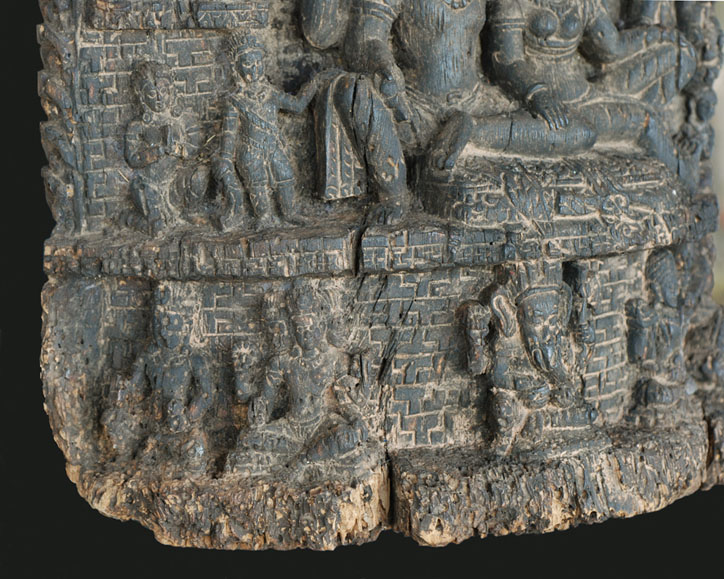|
|
«« go back
Shiva and Pârvatî
Nepal - Wood - Height 44cm width 30cm - 17th century
This wooden relief represents a theme which is particularly popular with the Newar people of the Nepal Valley, namely that of Umâ-Maheshvara, namely Shiva with his consort Pârvatî (Umâ), surrounded by their retinue. Although it is Vishnu who holds greater importance in the Nepal Valley in virtue of his connection with the sovereign, considered one of his manifestations, it is Shiva to whom the most important Hindu temple of the Valley, Pashupatinâtha, is devoted. This image is inspired by a description found in the Matsyapurâna, an Indian text written in the 7th century, although its teachings were transmitted orally before that. Indeed, the oldest Nepalese stone stele illustrating this subject is found in Patan and bears to a date corresponding to 573 C. E. (1).
The divine couple is placed in a space conjuring up a cave under the top of their abode, mount Kailâsa, represented through a special kind of stylisation, already visible in a stone relief in the temple of Changu Nârâyana, where rocks are rendered with geometrical patterns traceable to India. Their shape is reminiscent of the clay bricks baked all over the Valley and used to build temples, palaces and houses since antiquity. Shiva and Pârvatî are depicted in an intimate and affectionate mood. Shiva encircles his spouse’s shoulders with his upper left arm, whilst she is resting her hand on his knee, her face bent slightly towards her consort. Shiva is portrayed twice as Lord of Yoga (Yogeshvara) in the upper register of the composition, set on either side of Garuda with his wings unfolded. Shiva’s mount, the bull Nandi, can be made out on his right, with very elongated ears. In other similar depictions his first- born, Karttikeya, is depicted on his back. In Nepal, Karttikeya carried greater importance than Ganesh until the first Malla period (1200-1482), although in this wooden relief he is depicted in the register below Nandi, his hand resting on Shiva’s right knee in one of the rather rare manifestations in which he is standing. There is a kneeling figure beside him, paying homage. The closeness of Karttikeya and the kneel- ing believer is reminiscent of Buddhist iconography (2).
To the left of Pârvatî there are an attendant with a large fan and a female figure kneeling apparently on water, probably Ganga. The riverine goddess, loved by Shiva and tolerated by Pârvatî, is portrayed in the same position in a stone stele representing the same subject and dating back to the 10th century (3). The presence of Ganga in this position, specular to Karttikeya, may be justified by the fact that, according to an ancient legend, the latter was abandoned in the waters of the Ganges (4) as a baby. Below Ganga there is another female figure, knelt in the presence of the divine couple with her hands joined in the gesture of homage (namaskâra- mudrâ) and placed obsequiously at Pârvatî’s feet. Such kind of figure appears in two stone reliefs reproducing the same iconographic theme, one at Banepa, datable to the Licchavi dynasty or to the transitional period, the other at Kath- mandu, dated to the 16th century (5). A number of figures from Shiva’s family or retinue are visible in the lower register of the relief: in the centre is Ganesh, the son with the elephant’s head, flanked by two aspects of Shiva. The emaciated figure of Bhringi, a faithful devotee of Shiva (6), is carved at the right end of the same register. This sage, part of a group of Himalayan Saiva adepts, forgot to worship and was cursed by Pârvatî, who cast a spell on him causing him to lose so much weight that he became a skeleton and his legs would no longer carry him. Taking pity upon Bhringi, Shiva gave him a third leg so that he could continue worshipping and at the same time he joined with Pârvatî, consubstantiating himself in the manifestation called Ardhanârîshvara, the androgynous Shiva, in such a way that his spouse could also enjoy the reverence generally reserved for him (7). This episode points to the importance of the shakti, the creative energy symbolized by Shiva’s consort, in reaching the highest levels of spiritual realization. (1) Mary Shepherd Slusser, Nepal Mandala. A Cultural Study of the Kathmandu Valley, (2) vols, Mandala Book Point, Kathmandu 1998, p. 233, fig. 351. 2 Ibid. pp. 259-260.
3(9 Pratapaditya Pal, Himalayas. An Aesthetic Adventure, The Art Institute of Chicago - University of California Press - Mapin Publishing, Chicago - Berkeley - Ahmedabad 2003, p. 29. (4) Mary ShepherdSlusser, Nepal Mandala. A Cultural Study of the Kathmandu Valley, op. cit., p. 260.
(5) Cf. ibid., plates 253 and 355. (6) Cf. PratapadityaPal, Himalayas. An Aesthetic Adventure, op. cit., p. 29, and Mary Shepherd. Slusser, Nepal Mandala. A Cul- tural Study of the Kathmandu Valley, op. cit., p.179. (7) Eckart Schleberger, Le divinità indiane. Aspetto, manifesta- zioni e simboli. Manuale di iconografia induista, Mediterranee, Roma 1999, p. 99. ALC (Free Circulation)
|
